Antenna with a French twist
Pieter-Tjerk de Boer, PA3FWM web@pa3fwm.nl(This is an adapted version of part of an article I wrote for the Dutch amateur radio magazine Electron, January 2018.)
While travelling in France, I often see antennas on the roofs
which look like folded dipole for the FM broadcast band, but with two extra bends.
The central part of the dipole is mounted horizontally, but both ends are
vertical, as shown in the following pictures.
Outside of France I don't encounter this type of antenna.

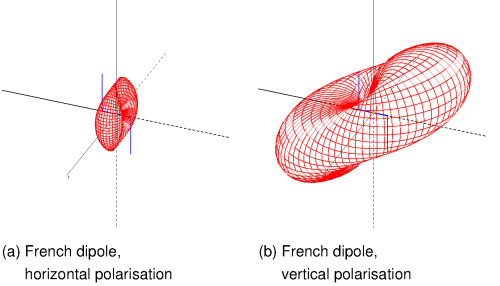
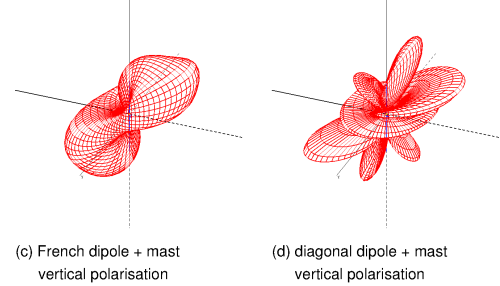 What could be the idea behind this type of antenna?
And why don't we see them outside France?
In the Bibliothèque Nationale de France
in Paris, which in principle archives everything published in France,
I browsed a pile of popular technical books about radio and TV antennas.
To my surprise, none of these books mention or show this type of antenna.
What could be the idea behind this type of antenna?
And why don't we see them outside France?
In the Bibliothèque Nationale de France
in Paris, which in principle archives everything published in France,
I browsed a pile of popular technical books about radio and TV antennas.
To my surprise, none of these books mention or show this type of antenna.
However, asking the question on the Internet newsgroup fr.rec.radio quickly gave an answer. Thierry Vignaud explained that the idea is that such antennas can receive both horizontally and vertically polarised signals, and that they became popular in France in the 1980s, when the FM band was opened up to private/commercial radio stations. Those stations often chose vertical polarisation, while the public radio stations were using horizontal polarisation.
I've simulated such an antenna in NEC2 (albeit as a simple rather than folded dipole). Figures (a) and (b) show the horizontally and vertically polarized share of the radiation diagram. The horizontally polarized radiation clearly has two nulls, as would also be the case for a normal horizontal dipole. The vertical polarization is largely omnidirectional, but has a maximum at an elevation of several 10s of degrees.
An antenna which radiates both horizontal and vertical polarisation, in fact radiates a diagonally polarised wave (or elliptically polarised, if there is a phase difference). Thus, the dipole with the French twist acts as a simple dipole mounted diagonally. I've simulated that as well, and it results in essentially the same pictures (not shown here).
It seems easier to build a diagonal straight dipole than the extra bends in the French dipole, so there must be another reason to insert those bends. Further simulation shows that the French dipole is rather insensitive (see figure (c)) to the presence of a vertical mast near the dipole's center, while the radiation diagram of diagonally mounted dipole is heavily disturbed by such a mast (see figures (d)). This makes sense: in case of a diagonally mounted dipole, there is already a strong vertical field component near the mast, while the French dipole is still horizontal near the mast and thus hardly interacts with it.
Addendum
After publishing the above article, a few of these antennas outside of France have come to my attention: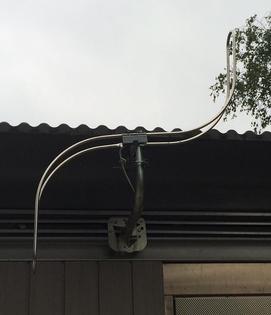
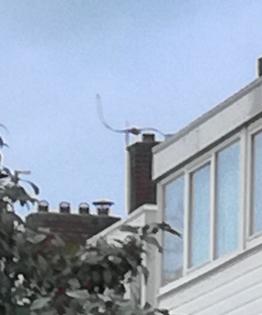
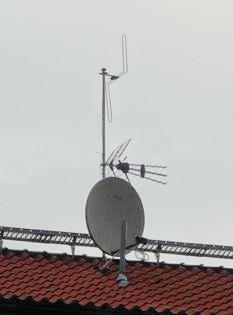
The left and middle pictures were taken by readers of this article: in the north-west of Spain and in Eindhoven, the Netherlands, respectively. The third picture was taken by myself in Stockholm.
I'm most surpised by the third one, as it is much farther away from France, and on a large hotel building. The former two may simply be cases of people bringing the antenna along from France while moving house, but that explanation can't hold for a (presumably) professional installation on top of a Stockholm hotel.
In 2024/2025 I spotted a few more such antennas far away from France:
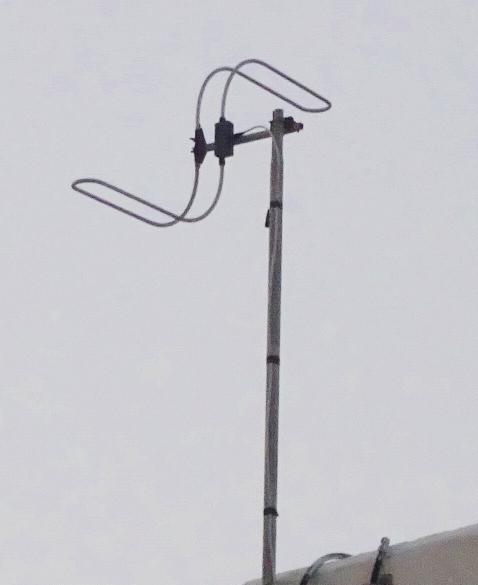
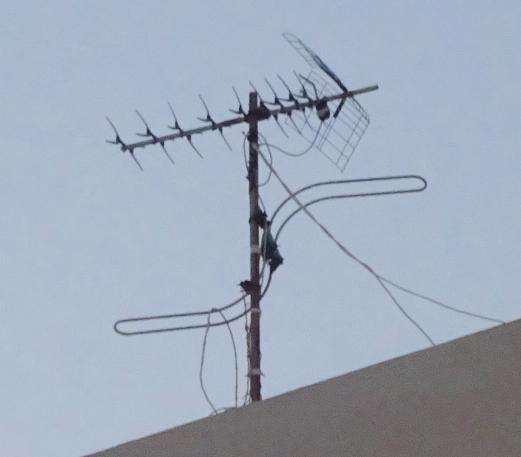
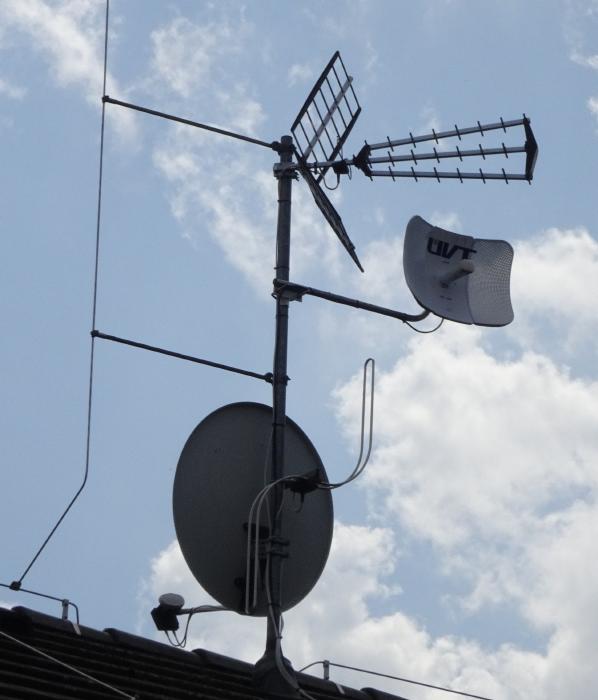
The third one was spotted in the Czech Republic, in Liblice (not far from the big medium wave masts, which is in fact why I visited this village). One may wonder how the antenna performs when mounted directly behind that satellite dish...
If you spot this type of antenna at other places, please let me know!